Kwantlen soccer field plans in the works
December 7, 2009 by Katie Lawrence · 2 Comments

The gravel fields at Newton Athletic Park (NAP) could be the future home of Kwantlen's own turf field. NAP is about two minutes away from the Surrey campus. (Katie Lawrence photo)
Plans are being drawn up between Kwantlen and the City of Surrey to put a turf soccer field at Newton Athletic Park, down the street from the Surrey campus.
Nothing is official yet, but Gordon Lee, vice-president of finance and administration at Kwantlen, feels that partnering with the city to build the field for Kwantlen’s use would greatly benefit the school.
“We have never put a lot of money into athletics. Over the past 10 years, we’ve created a gym at one campus, and we’ve developed varsity teams in four sports (basketball, soccer, badminton and golf), but again, we have never invested much in facilities,” said Lee.
Lee said that the new field would include a Kwantlen scoreboard, the university’s logo at midfield and seating for 500, but the field wouldn’t be used exclusively by Kwantlen. Since the school is sharing the cost of the field, which Lee estimates to be around $2.5 million, with the city, Surrey soccer teams would be able to use the field. Kwantlen would have priority on which times they get the field.
“The city will go ahead if we don’t partner with them, although we do think it is in the interest of the university to enter into a partnership arrangement with the city to gain access to a field which we can use that would be ours,” Lee said.
For the past five to seven years, Kwantlen has been looking into putting in an athletic field for the school’s use, but there are a couple of challenges that need to be overcome before anything can be put into action.
“There’s not a lot of space and, unfortunately, we need the space right now for parking lots,” said Lee. “The other issue is the cost of putting in a turf field, which is really the only way to go in our climate.”
But now that the field can be built at Newton Athletic Park and with cost-sharing with Surrey, both of those challenges seem to be remedied. All that’s necessary for field construction to start is a stamp of approval from Kwantlen’s Board of Governors.
Lee said Kwantlen’s share of the field cost will be taken out of university resources; none of the money will come out the students’ pockets.
If everything goes ahead as planned, construction of the field will start early in the new year and it should be ready for the 2010 soccer season.
In the future, Lee said that Kwantlen hopes to expand fitness and sports facilities at all campuses to get everyone involved in either competitive or recreational sports, but the problem is the lack of space.
“The Richmond campus is even more of a problem, because there’s no land space around there at all. We have been talking with the City of Richmond about using the Oval after the Olympics and that’s a big possibility for the indoor sports,” he said.
Profile: Still life with end times
December 4, 2009 by Justin Langille · Leave a Comment
Nostradamus still makes the front page of the Weekly World News now and then, but an apocalyptic event has yet to arrive to end life on earth.
That hasn’t stopped Robert Gelineau from revealing what the possible end of modern society might look like some day.
A painting and drawing instructor in Kwantlen’s fine arts department for over 10 years, Vancouver resident Gelineau spends his spare time creating scenes from a potential post-apocalyptic world on canvasses in his Gastown studio.
Inspired by classical still life painting and the shock value of horror films, Gelineau works diligently to develop detailed scenes of natural disaster that depict the end of human society and our contemporary world.
Chronicle photographer Justin Langille visited Gelineau in his studio to discuss the ideas behind his work and the problems involved in teaching painting to students in era when the lure of technology has pulled the study of art into a state of disarray.
Video: Kwantlen at belt level
December 2, 2009 by Mitch Thompson · Leave a Comment
Emily Brook is a Kwantlen student who, due to a lifelong disability, relies on a wheelchair for mobility. Here she discusses her disability, as well as the issues of being wheelchair-bound, a state she did not choose but which defines how others see her.
Surrey buildings lose letters, gain tree names
December 1, 2009 by Kirk Darbyshire · 1 Comment
This week on the Surrey campus, room numbers won’t change but the names on the buildings they’re in will.
In May, Kwantlen announced planned name changes for all of the buildings on the schools Surrey campus. Over the next week signage will be updated to reflect the changes.
Building C has already been dedicated as Surrey Main, and this week the remainder of the buildings will lose their letters in favour of the names of trees indigenous to British Columbia.
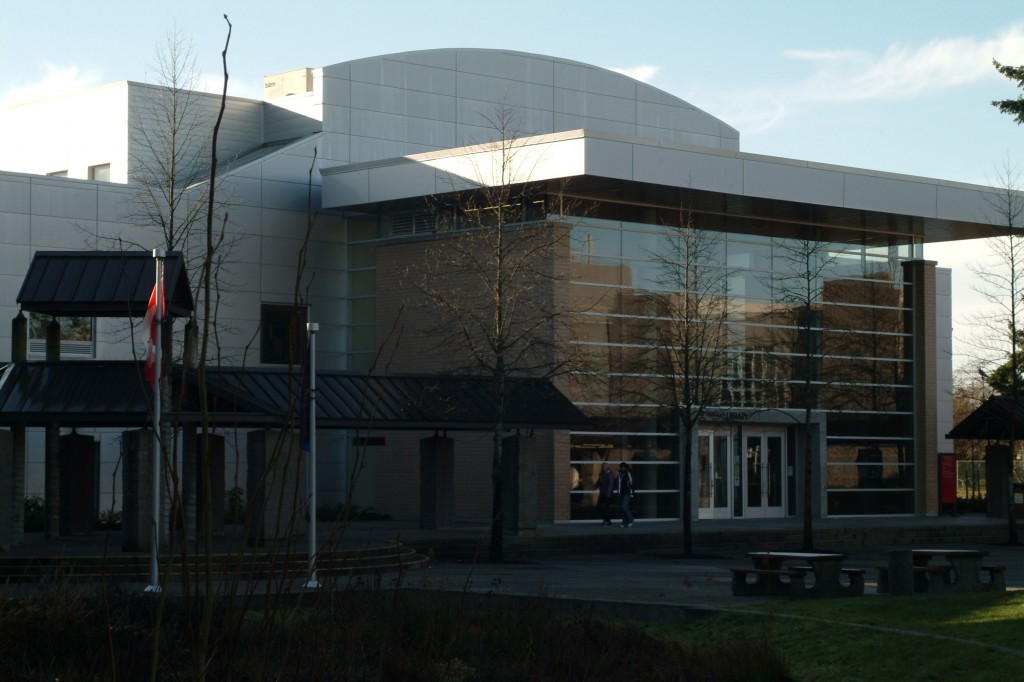
Building A is now Arbutus. Arbutus building is where the Coast Capital Savings Library is located. The name Arbutus was chosen because the tree is Canada’s only broad-leafed evergreen tree. It also has historically meaning for the coastal Salish peoples in regards to medicine and mythology. (Kirk Darbyshire photo)
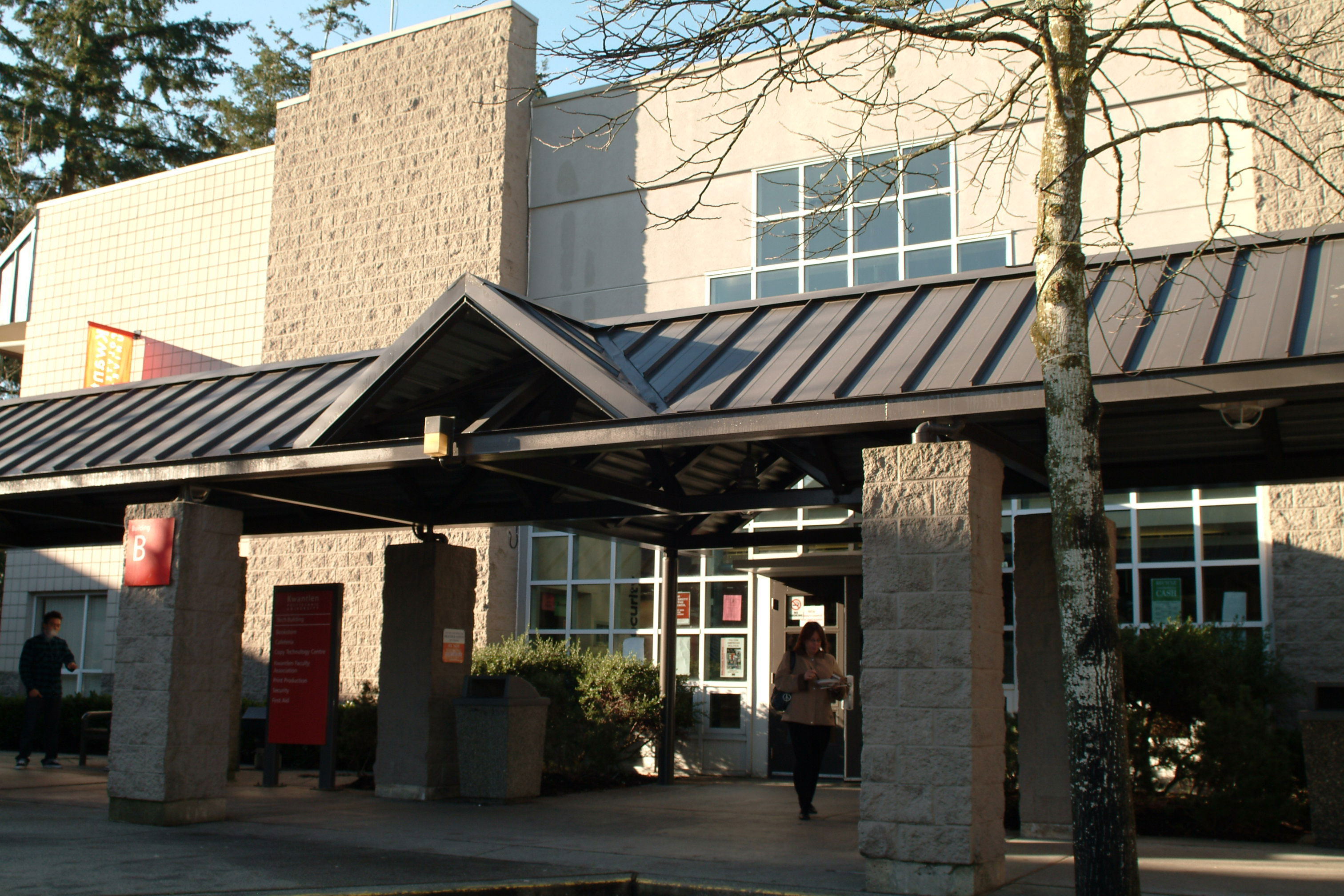
Building B is now Birch. Birch building is where the Kwantlen bookstore and Chartwells Café can be found. “Bright white and shining†is the ancient European meaning for the word birch. Birch was chosen as a name due to the nearly imperishable nature of the tree's bark. It also has historical roots in many cultures including being used to make canoes, tools and musical instruments. (Kirk Darbyshire photo)
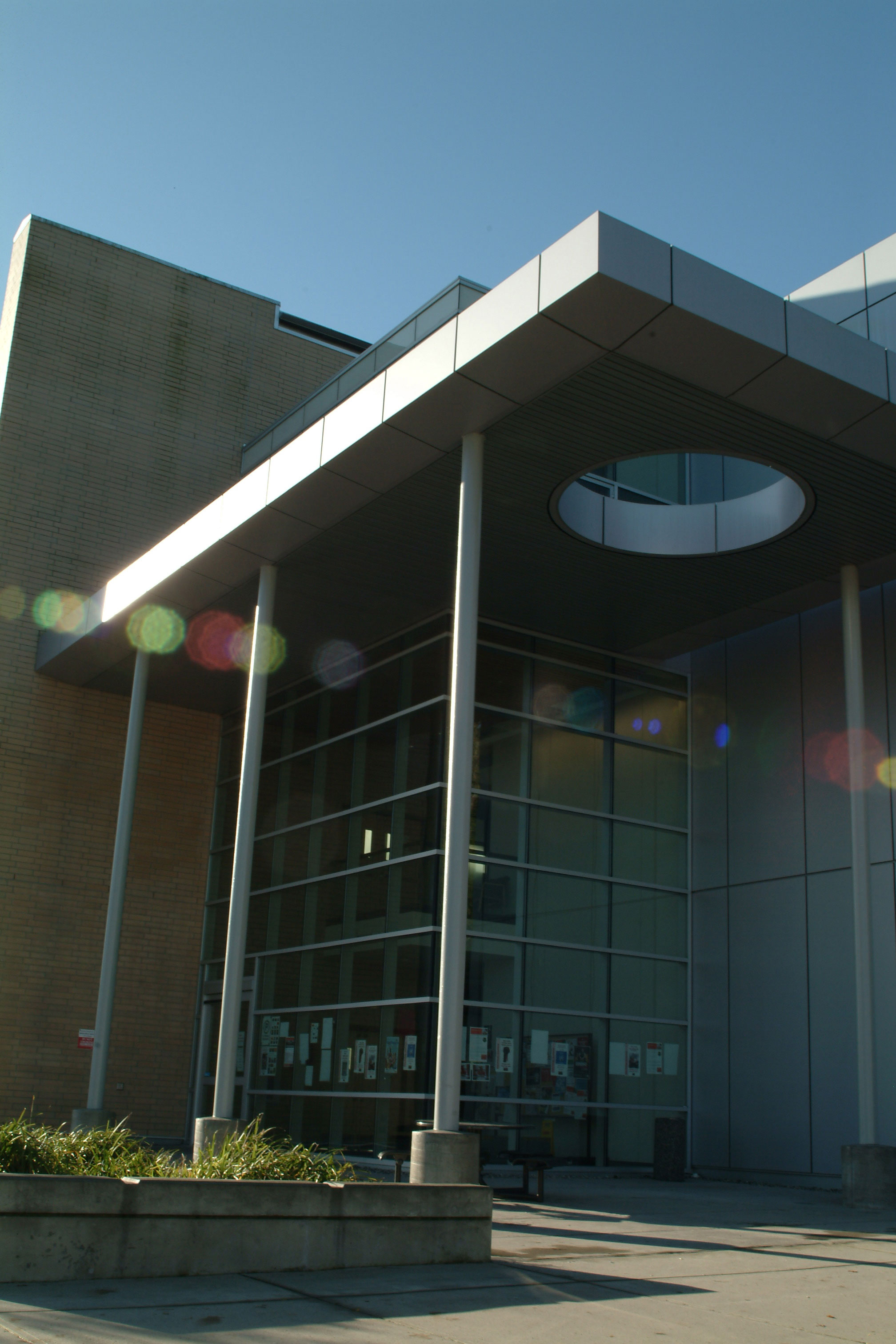
Building D is now Fir. Fir makes up half of the academic learning building and is located in the courtyard close to the school's pond. Fir was chosen as a name because the tree is the most commercially important in western North America. Historically, Douglas Firs have the reputation of being the largest of all trees. Even though giant firs are a thing of the past due to over-foresting, stories of the towering trees climbing over 400 feet into the air are still told. (Kirk Darbyshire photo)
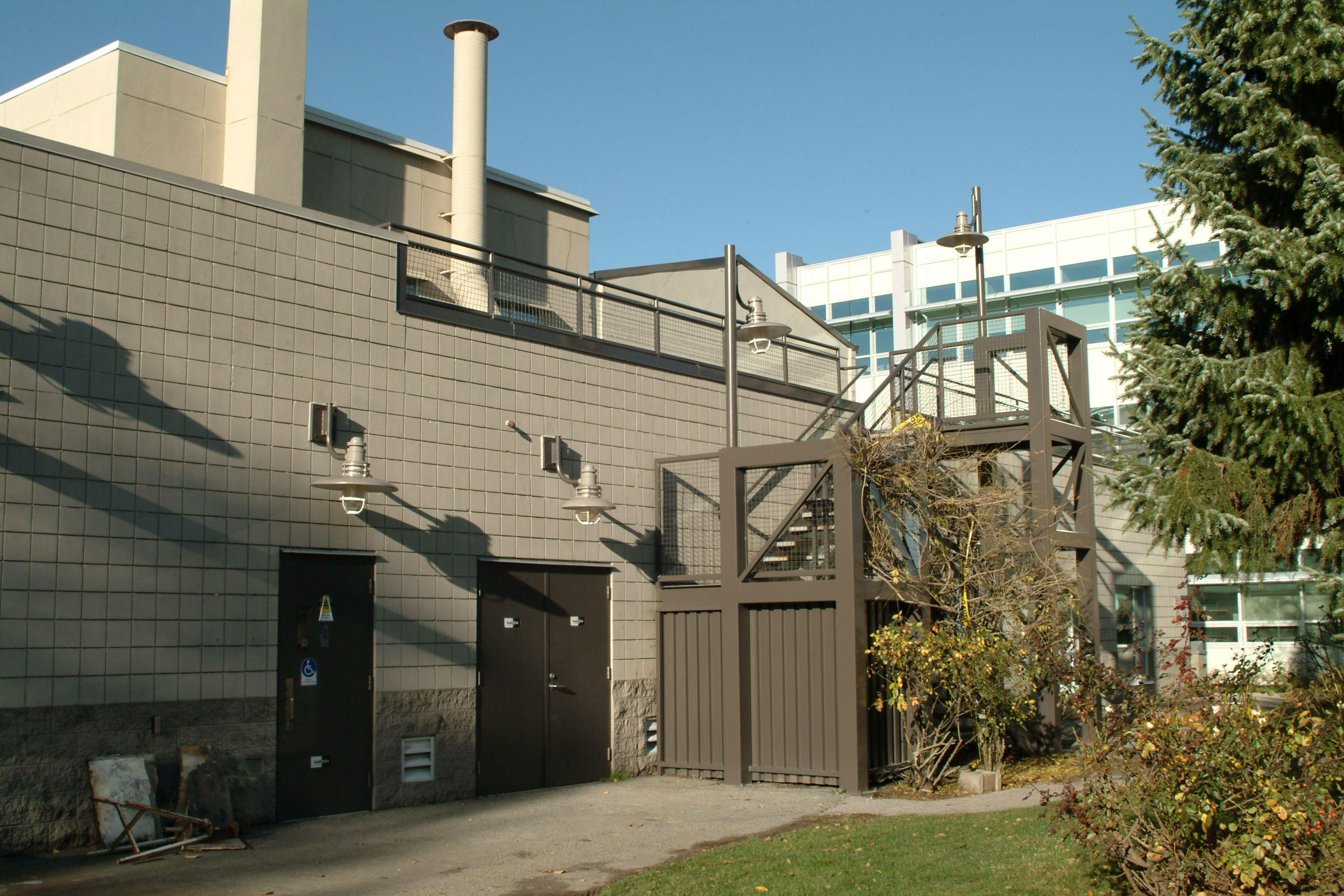
Building E is now Spruce. Spruce is connected to Fir and makes up the other half of the academic learning building. Spruce was selected as a name because of the tree's familiarity to many people and its most common use -- the Christmas tree. Spruce is also well known for its musical applications. Instruments such as cellos, guitars, mandolins and even Stradivarius violins are made from this wood due to its distinctive resonant qualities. (Kirk Darbyshire photo)
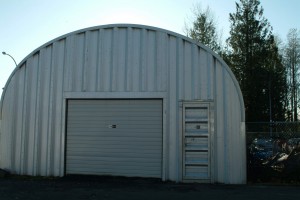
Building F is now Yew. Yew building may be a small storage building but no one would ever know that by the name chosen for it. Yew was a symbolic tree revered by the Egyptians, ancient Greeks and early Christians as the tree of everlasting life. (Kirk Darbyshire photo)
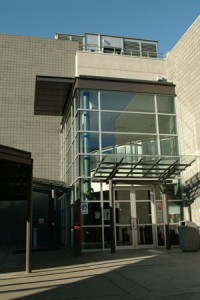
Building G is now Cedar. Cedar building is home to the gymnasium, KSA offices, and the Grass Roots Café. Cedar was selected as the name for one of Kwantlen's busiest buildings because of its historical importance to the First Nations People of the Pacific Northwest. Sometimes referred to as the long life giver, cedar had many uses across many cultures. (Kirk Darbyshire photo)
GBTR Successful Aging Festival full of life
December 1, 2009 by Kristi Jut · 2 Comments
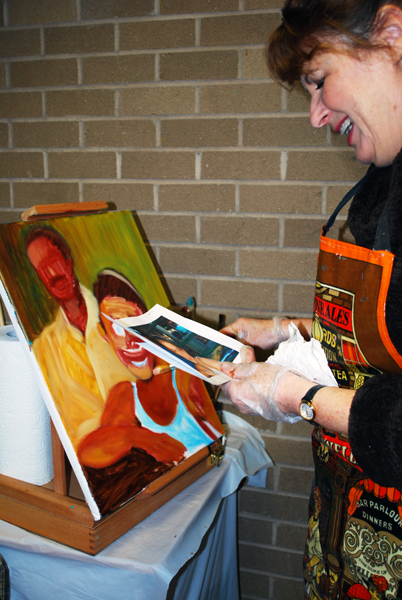
Robin Bandenieks wanted to lure community seniors to art as a form of recreational therapy at the Successful Aging Festival on Kwantlen's Langley Campus, Friday Nov. 27. (Kristi Jut photo)
Afternoon naps and tea parties for senior citizens in Langley? Not likely.
Kwantlen’s Gerontology-based Therapeutic Recreation students put together a lively Successful Aging Festival on the Langley campus on Friday, Nov. 27.
The 20 students graduating from the program this year had to plan an event as part of their course requirements. Instructor Carol Hansen said she was extremely pleased with the outcome of event, which the students have been planning since September. The money raised from raffle tickets and donations will go toward community activities for seniors.
GBTR student Jenni Scott said students in the program had sent out posters and flyers to homes and throughout the community to promote the Successful Aging Festival.
The festival, which included over 30 kiosks that supported senior recreation, as well as a tarot-card reader and door prizes, lured many senior citizens from Langley and surrounding communities.
“It’s important to spread awareness to the community about senior-recreation,†said soon-to-be graduating student Aubrey Morrison. “Not a lot of people know that there are activity groups or outreach programs available.â€
Robin Bandenieks from the Fort Langley Artists group was there to promote an active interest in the arts to the aging community.
“I’m here to hopefully talk someone into taking up painting as a hobby,†said Bandenieks. “[Painting] can improve cognitive skills in older people,†she said, also noting that it keeps the brain active and is a defense against the effects of Alzheimer’s disease, which is common among the elderly.

Students anticipating graduation from GBTR program organized the entire festival, including games, raffles, kiosks and door-prizes. (Kristi Jut photo)
Volunteer Parish nurse and senior citizen Agnes Bauer from the Ladner United Church was also there to promote workshops and activities for the community. “We run a disabilities support group,†said Bauer, but wanted to inform that seniors need the same type of counseling that younger people do—including issues with sex and drugs.
“We just had a very successful HIV workshop,†she said. “Some seniors think AIDS and HIV is not an issue for them, but they’re mistaken if [they] think they’re getting out of this life without knowing someone with HIV or AIDS.†Bauer also made a point of speaking on the church’s addictions program, which ranges from addictions to shopping, sex, and, of course, drugs.
Langley Seniors Centre leaders Donna Benoit and Arlene Brown had a lot to offer the senior’s community, with an extensive outreach program for lonely or dependant seniors and an adult day centre to provide relief for caregivers. The centre has worked closely with Kwantlen, they said, and has helped inform people about their programs.
Brown emphasized that awareness about the programs have become increasingly important. “However old you are now,†she said, “you’re going to be a senior one day.â€
The campus was free of paid-parking for the day of the event.
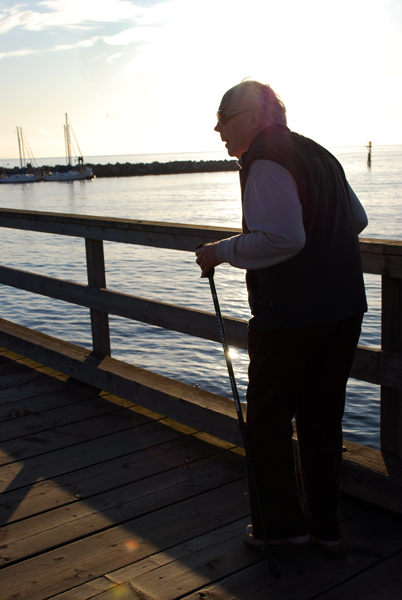
A White Rock senior takes advantage of the late-November sunny day by keeping active. (Kristi Jut photo)


